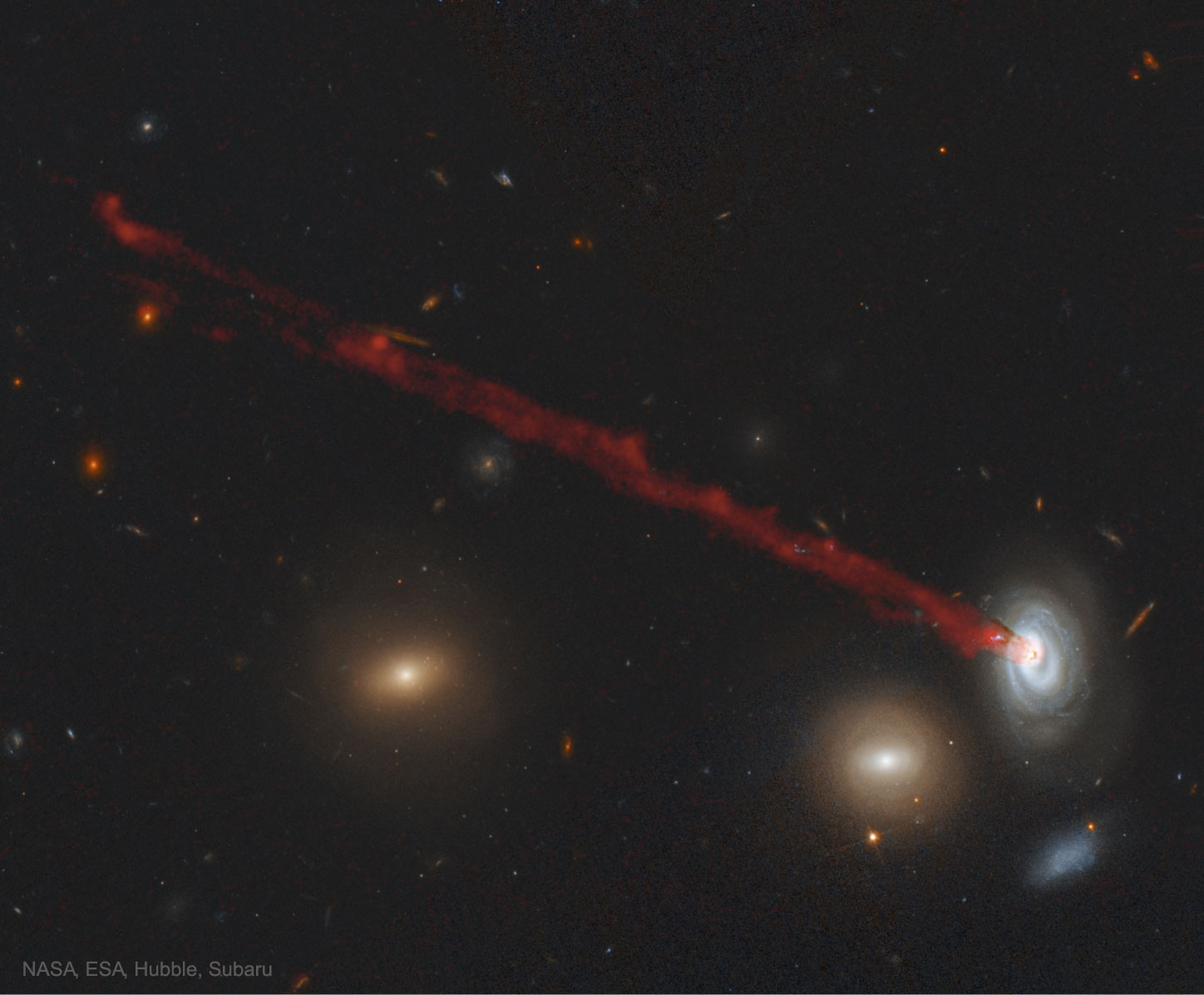distefanom wrote: ↑Mon Jan 28, 2019 8:00 am
Ann wrote: ↑Mon Jan 28, 2019 5:24 am
To me it looks like a jet, being violently ejected by energetic processes in the galaxy's core. Apparently that is not the case. The explanation in the caption is good enough.
APOD Robot wrote:
The red path connects to the center of D100 because the outer gas, gravitationally held less strongly, has already been stripped away by ram pressure.
Ann
For me the "Galaxy gas stripping" is new phenomena. How can it happen? Is not so clear to me, If I don't assume the galaxy itself as running inside a "mega -storm" which involves the whole galaxy itself.
in this case, I can imagine that the gas jet should have swirls way more chaotic than what we see here... to me still resemble too much as a jet from an AGN... anyway, is true that the other galaxies are orange-colored a telltale sign of OLD stars
Galaxy ram stripping is a
relatively common phenomenon. It occurs when gas-rich galaxies get caught up by the mighty gravity of fairly nearby galaxy clusters. Such clusters are always full of thin, multi-million degree gas, which fills the space between the member galaxies.
Because this gas is so hot, it can only be seen at X-ray wavelengths. The picture at left shows the X-ray-emitting hot intracluster gas in a galaxy cluster.
NASA, ESA, and the Hubble Heritage Team
When a spiral galaxy falls into the cluster, pulled there by the cluster's overwhelming gravity, the intracluster gas acts as an "upwind" on the spiral galaxy. The spiral can't hold on to its gas, which is pulled out of it in a long tail. You can see that the galaxy in the picture at right, ESO 137-001, is losing gas from most of its disk.
Gas being stripped from the core of galaxy D100 in the Coma Cluster.
NASA, ESA, Hubble, Subaru Telescope, W. Cramer (Yale) et al.,
M. Yagi, J. DePasquale
In the case of spiral galaxy D100 in the Coma Cluster, it has, according to today's caption, already lost the gas in its disk. That makes sense to me. Most of the mass in any large galaxy will be concentrated in its core, and the galaxy'a ability to hold on to its own gas will be greatest in its core.
In galaxy D100, even the gravity of its core is being overwhelmed by the combined gravity of massive galaxies tugging at the gas in its core. The gas in its disk has already been lost, because the galaxy's own "local gravity" is weaker there. Now the rest of the gas is being pulled out of the galaxy in a long narrow "jet" which isn't generated by upheavals in the galaxy's core, just a concentrated source of gas being pulled out of the galaxy in a long narrow string.
It makes sense to me.
Ann
 The Long Gas Tail of Spiral Galaxy D100
The Long Gas Tail of Spiral Galaxy D100





